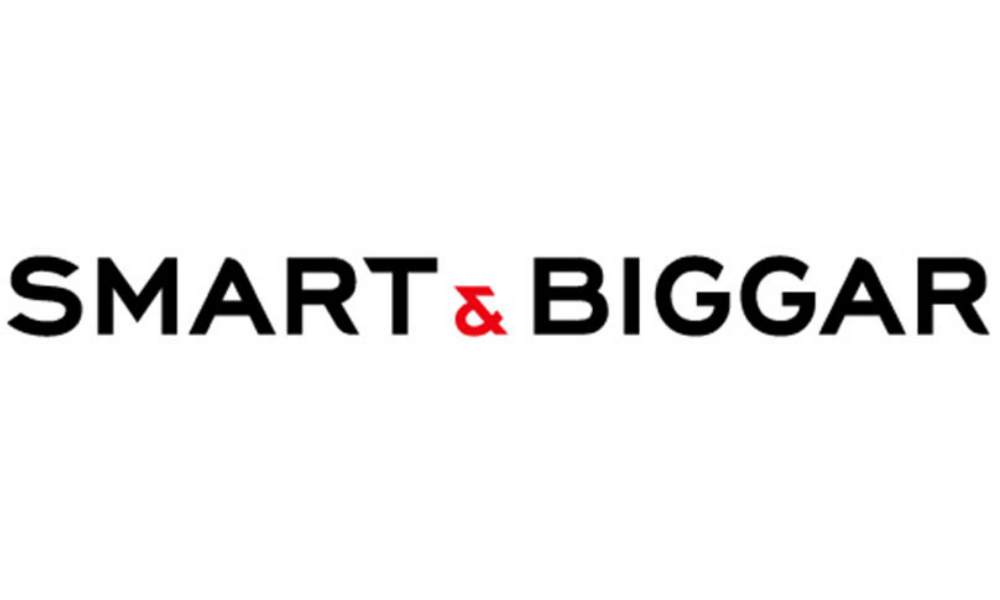Leading a deal team to success “is art, not science,” says Kate Chisholm, QC, who adds that the easy part of working on a deal is pulling together all the necessary information. “The hard part is the art involved with synthesizing all of that information into a decision, because there’s never a clear answer.”
Now on her fourth general counselship, Chisholm has led several deal teams as Senior Vice President, Legal & External Affairs at Capital Power in Edmonton. She says the best team leaders are those who are careful and deliberately include team members in the decision-making process, “who understand that the best business solutions come from milking all of the value from very diverse perspectives.”
Chisholm hires external counsel for expertise in specific areas and says she’s likely to take their advice, but “external counsel is never going to know your company and your motivations and what spells success for you as well as you do.” She minces no words when it comes to setting out the rules to an external deal team. “I never get into a battle of egos because I make it very clear what questions I want them to answer. I would never put up with somebody who was competing with me in some way. I make it very clear where their sandbox is and where my sandbox is. Then you just have to stick to your sandbox.”
Chisholm said she believes that the toughest part of negotiating any transaction centers around factors beyond price. “When you’re leading a deal team, I think what you need to do is figure out what the other side’s equation is. They’re solving for X but it’s probably not the same X that you’re solving for.”
The most difficult to negotiate tend to be social factors, risk issues or legal liability. “Especially if it’s a liability issue or a risk issue that they want to offload onto somebody else, it’s not something that they’re going to tell you because obviously it would make their negotiations more difficult.”
But it’s certainly in your best interest to know, because if you can figure that out, especially if it’s something that is bad for them but isn’t as bad for you, “you can frequently work out a deal that scratches their itch … but doesn’t cost you anything.”
When EPCOR Utilities was split into two companies in 2009, one became publicly owned by the City of Edmonton and the other became Capital Power.
Chisholm says the City wanted to keep the head office in Edmonton but the team had to guess this since it wasn’t stated during negotiations. “When we started to offer them things that would achieve that purpose, then they got really interested and that’s when we knew we had struck gold.” Chisholm’s team ended up devising a capital structure that gave the City of Edmonton a single share that was non-voting unless Capital Power wanted to move its head office.
Peeking behind the corporate veil to gather as much intelligence about the other side as possible can offer competitive advantages. “If you can get some colour commentary about them and their motivations from other people, then you can figure out if there’s something beyond price and if so what it is,” says Chisholm.
To figure out what the real story is, talk to people who know the company but aren’t employed there, read all of the press about the company, look at its social media and ask questions, Chisholm says. “Often investment bankers, for example, who aren’t working directly for them but who know of them or have worked on a historic deal on the other side from them can give you some useful information.”
Chisholm says she believes a good team gets better every time it works together and that the more openly team members can communicate, the better. She says that there’s no such thing as a dumb question or suggestion. “We find often that the most off-the-cuff suggestions lead to brilliant moments. So we just trust each other. We also often disagree. We have very colourful debates but it doesn’t get personal; we’re always solving a problem. And the more we debate, the better the solution we come up with.”
Embedded in the business
The transfer of BCE’s pension risk to Sun Life Financial in 2015 was the first of its kind in North America. Hugh Kerr, Sun Life’s Vice President and Associate General Counsel in Toronto, was very familiar with the insurance aspect of the deal and did a lot of the direct negotiations himself. “Internal counsel really do have significant advantages in terms of being embedded in the business end, knowing the business, and knowing the people they’re dealing with. Counsel should not lose sight of that and defer to external counsel too quickly.”
In addition to hiring a leading Toronto law firm for the deal, Kerr hired a New York firm that had done similar transactions in the UK. Plan sponsor BCE drove the deal’s timing, Kerr says, which required Sun Life to not only answer to its own internal requirements but to make sure BCE’s timelines were met.
Kerr looks for an efficient process when he’s leading a deal to avoid working at cross purposes or duplicating efforts. The best in-house leaders have an in-depth knowledge of their company’s business, and of the law related to that business, he says, as well as “the courage to make those decisions when they are presented to you.” Part of that courage comes in dealing with external counsel’s expectations and saying no when they’re not needed.
There are a number of factors in pulling a deal team together, says Kerr, including expertise in specific areas and people who have contacts with regulators. “You’ve only got a certain number of people and so your external counsel can supplement that and that’s key for getting things done on a timely basis and getting through lots of volume.”
He says most good outside counsel will take their lead from the in-house person. External counsel will present issues as they arise, but “they’ll be looking to the business to make those decisions and so you need to step up and make those decisions.”
External perspectives
Andrew Cohen, a partner who focuses on M&A in Miller Thomson LLP’s Business Law Group in Montréal, says leading a deal can be a balancing act for in-house counsel. The best ones “know when to intervene and they know when to lead and they know when to let their outside counsel do what they need to do.”
Some in-house counsel take a more active role in a deal, while others view their role as simply overseeing what’s going on and making sure that the transaction is properly working within the required time framework, says Cohen.
Although he sees the in-house counsel as his partner on a deal, “my job as I see it in the transaction is to lead the team.” He reports to the in-house counsel and then the team reports to him. “That’s just the style that I work with and frankly is usually the style that goes on in transactions that I’ve seen.”
Collaboration is key when working on a deal, says Cohen. “This isn’t about egos. A good team is where we all understand the end point, which is a successful transaction where our client is properly protected. Every transaction has risk — that’s just the nature of business. And you’re not going into a transaction to be in a situation where there is zero risk or zero issues, that just doesn’t happen in the real world. I think the best transactions work where there’s no turf war, where there isn’t a misunderstanding as to approach.”
Alicia Quesnel, a partner at Burnet, Duckworth & Palmer LLP in Calgary, says she takes the lead from in-house counsel as to what the extent of her role will be as external counsel. “As you talk about what the scope of the retainer is, you get a sense of what they’re going to do and what they want you to do. And that can actually change over the course of the transaction.”
After having done previous transactions with a company’s deal team, the expectations become clearer, says Quesnel, and the roles and the scope of what’s needed become more obvious.
Quesnel has taken part in deals in which in-house counsel initially plan to take a much more significant role but the project becomes too big for them to be both the point person and the subject-matter expert. When the leadership plan goes out the window, “the best thing you can do for your clients is to be flexible enough to respond to changing circumstances,” she says. “And if you are not flexible, you probably won’t get retained the next time another deal comes around. So it’s whatever serves the client’s best interests.”
Successful teamwork on a deal tends to be somewhat hierarchical, with a lead person and several subject-matter experts each working on a piece of the puzzle. Open lines of communication are key between the in-house lead and their external counsel, says Quesnel, “so you can nip things in the bud early rather than wait until it becomes a problem.” Depending on how fast the transaction is proceeding, there can be formal meetings, but if an issue arises that everyone needs to know about, a simple email works well. Every in-house counsel wants to know what’s going on and does not want to be surprised.
Often in-house counsel wants to be the gatekeeper in terms of whom external counsel is dealing with from the commercial side, Quesnel says. She makes an effort to keep them updated because “typically they want to always know what’s going on because the executive is going to be looking to them to answer questions at any given time. And they don’t want to be in a position where they can’t answer those questions.”
Leading with empathy
When he first started managing people, Jeff Davis thought he had to teach them to do the same things that he does best. It took him about a year to realize that it was his job to bring out the best in people, “not to try to make them like me, but try to understand who they are and what their strengths are and what drives them and what makes them happy in work and try to draw on that.”
As Chief Legal Officer at Ontario Teachers’ Pension Plan Board in Toronto for several years, Davis has worked on deals with external counsel in countries around the world. He said he’s come to believe that the most important characteristic of the best deal team leaders is empathy. Don’t try to make people think you’re the smartest person in the room, he says. Instead, “put yourself in that person’s shoes, to understand what they’re trying to achieve, to understand what their strategy is, to understand when there are obstacles, how they might react to it, and to be able to try to anticipate how they will react to it. Think about a problem or a situation as it arises so that you can anticipate those problems and be able to address them proactively.”
There’s a widespread belief that vulnerability should be equated with weakness, says Davis, but “vulnerability is not only the birthplace of trust but it also is the birthplace of innovation, creativity and change. It is how you find true happiness at work.”
Davis says the best teams have three core elements. First, they create a sense of belonging and safety in which everybody has a place and a role. Second, they share vulnerabilities with each other, which is necessary to create an environment of trust. And third is a shared purpose, the reason why you’re doing this above and beyond getting the deal done. Davis describes this as an existential question. “Why are we all doing this? What is the meaning of my job? And you need to get to the core of that question and be able to talk about that and find that among the group.” Once “you feel like you belong, that you’re open enough that you can be your true authentic self, you can show your imperfections and be vulnerable in front of one another and you understand why you’re all doing it — that to me is the recipe for the best teaming in the world.”
Davis has seen a lot of very competitive behaviour amongst lawyers who came from top law firms or governmental agencies. He has addressed the issue head-on, telling his team he would pay them more to be supportive and less if they were competitive with each other. “I’m not interested in the person who has the best idea; I’m more interested in the person who shares ideas with other people on their team. I don’t want to have the smartest person on my team — I want to have a person who’s trying to make everybody else better. And that person who does that, that’s the person I’m going to pay more.”
Constructive, ongoing communication
Ross Bentley at Blake, Cassels & Graydon LLP in Calgary works regularly with in-house teams and says constructive, ongoing communication between internal and external counsel is the key to a successful deal team. If a problem arises on a file, he tries to raise it sooner rather than later. As he puts it, “no problem gets better with age.”
Bentley appreciates it when internal counsel can sit down at the start to give him a clear definition of the transaction, the anticipated timelines and the roles of internal versus external counsel. It’s important to gauge the internal capability specific to the transaction at hand. Some clients have 15 in-house counsel and others 70 or more, so he has to be “cognizant of marrying together how big and complicated is this transaction and how experienced is the internal deal team.”
On larger deals, Bentley says his leadership style is to get the core team into a boardroom and talk about the transaction, the firm’s role, timelines, how to report internally and how to coordinate outreaches to the client. “The last thing we want is a whole bunch of people sending emails and calling in a seemingly disorganized fashion.”
Bentley says his role on a deal can depend on whether he is the regular counsel who has collaborated with the company previously or is called in as the conflict counsel and just getting up to speed on their capability. “You may have more back and forth and suggestions for them as you explore whether this is going to line up with what you think will generally be required for the transaction.”
Emphasizing that there are no one-size-fits-all deals, Bentley says his involvement in a transaction can range from as little as helping with diligence all the way to working on structuring and the negotiation of key agreements. In some cases, a client will call him and ask for help on one or two issues but a week later that role can shift to being the lead.
Wearing their decisions
When she was called to the Bar in the 1980s, Capital Power’s Chisholm says that in-house counsel tended to be thought of as lawyers who couldn’t survive private practice “because they were too lazy or not smart enough or whatever.” That perception has changed dramatically.
“I know a lot of in-house counsel who work every bit as hard as external counsel and I think that corporations have woken up to the fact that very good lawyers want to work in-house for a variety of reasons. You can get very, very experienced counsel on your own team and then you can build institutional knowledge rather than building a law firm’s knowledge. And you can have people who are part of the company and aware of the culture to contribute to the decision making.”
External lawyers can give advice on a decision and after the contract is signed they can simply walk away if the deal turns out badly, says Chisholm. But “in-house counsel wear those decisions and I think that they are now seen as serving a much more critical purpose than they ever were before. I think shareholders benefit from somebody who really cares and has sort of a parental feeling and will have to live with the consequences of every decision being central to the deal-making team.”
Problems inevitably arise and sometimes even the most carefully thought-out plans can change in the blink of an eye. But, as Chisholm says, that’s what makes deals so interesting. By having a strong team in place that has diverse perspectives and can think creatively, if “there’s an obstacle that makes that particular route unpassable, then I think that you put your brains together so that you can find an alternate route to get to the same destination. That’s what a lot of people actually find drives them because some of the other stuff becomes rote after a while.
“The really meaty, interesting work, the stuff that keeps you up at night, is finding that alternate route to where you ultimately want to be.”




